This carte-de-visite came to me from England (Northamptonshire), but it has nothing written on it to identify the sitter or photographer. The photo (print) was cut into an oval shape and glued onto a paper mount with an oval frame design already printed on it. Such cartes were generally made after someone had died, as a memorial tribute, by reprinting or copying an earlier photo. This carte was likely made in the 1860s, by copying a daguerreotype made in the 1850s or 1840s.
If the original photograph was taken in the 1850s, the sitter was probably born in the 1780s or earlier. In her right hand is a framed silhouette, or profile, cut from black paper. Prior to the invention of paper photographs (CDVs) and tintypes in the 1850s, silhouettes were the least expensive way to create a personal portrait.

It would appear, then, that this is a carte-de-visite from the 1860s, made with a photograph taken in the 1850s, of a woman holding a silhouette that was made even earlier.
Layers of love and memory…

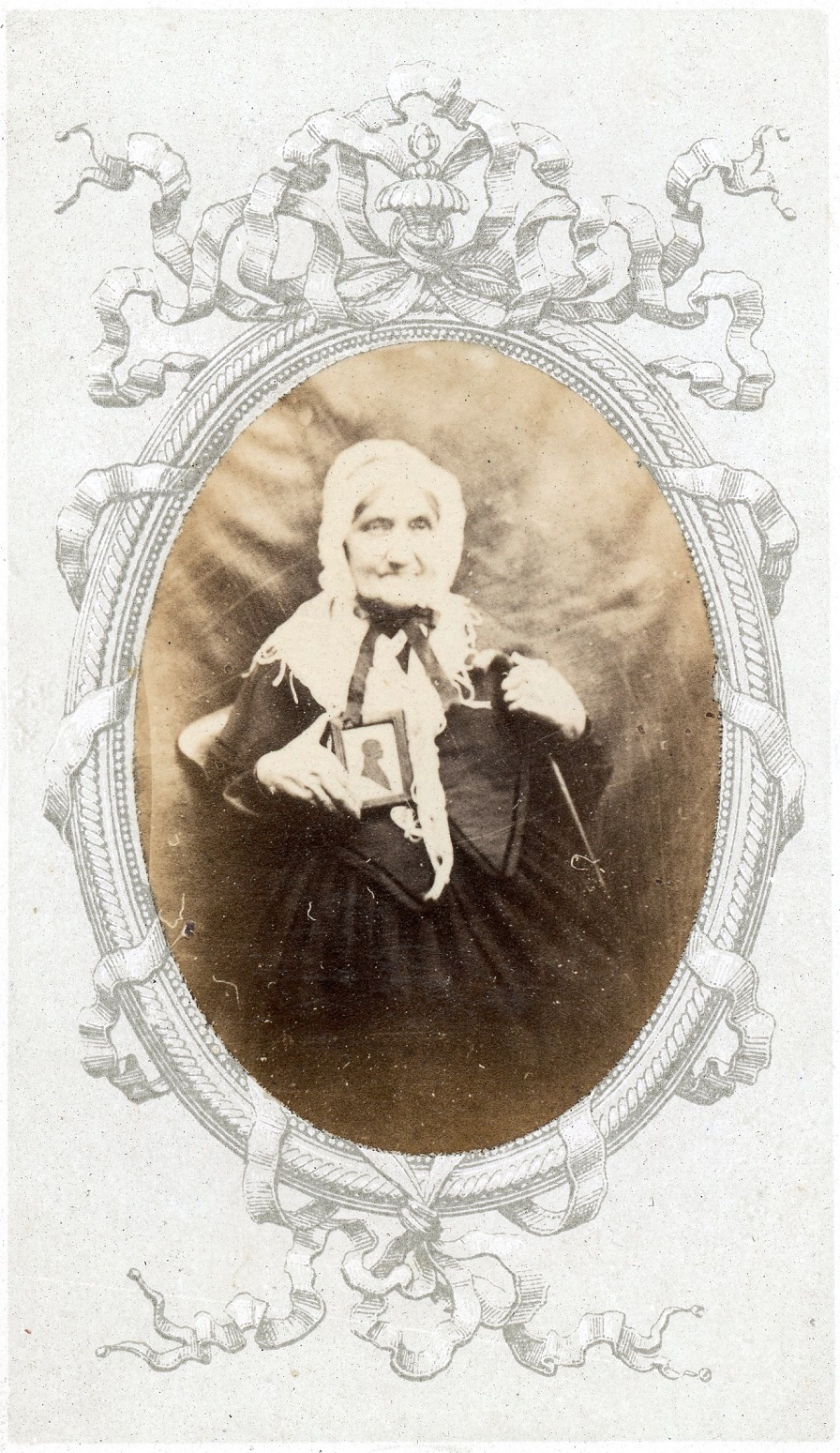
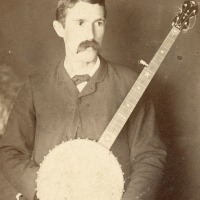
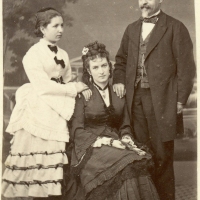
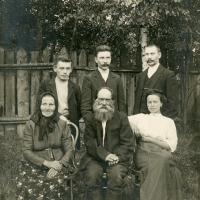
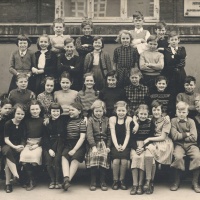
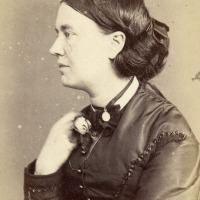
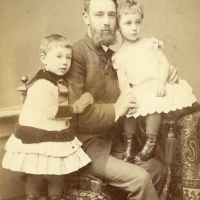
I love the matt board. Wish they still made them like that!
LikeLiked by 2 people
It’s nice, without any lettering at the bottom to distract. Too bad there isn’t a name or location on the back, though!
LikeLiked by 1 person
I see some scratches that make me think the original photo of the woman was a daguerreotype. Any thoughts? Is that a cane in her other hand? Lovely photo and post!
LikeLiked by 3 people
I also wondered if the original might have been a daguerreotype. It seems very likely. Most daguerreotypes were produced in the 1850s and 1840s, which means she could have been born as early as the 1770s or even 1760s! The object in her left hand is probably a cane. Thanks for mentioning the scratches, Shayne!
LikeLiked by 3 people
She easily might have been born before the Revolutionary War!
LikeLiked by 3 people
That’s hard to wrap your head around, isn’t it? We think of the Revolution as ancient history, but it’s really just three generations, if each generation lived to be 80 years or more. It’s possible for someone alive today to have known someone who knew someone born before or during that war.
LikeLiked by 2 people
There go those layers again!!
LikeLiked by 1 person
I wonder who she was and if the silhouette was her husband or son. It’s always so fascinating to contemplate the lives and times of the people in these photos.
LikeLiked by 3 people
Yes, I think it was probably her husband, or possibly a son. The silhouette could have been made when her husband was a young man. I see silhouettes for sale in shops from time to time. I think I’ll look a bit closer from now on.
LikeLiked by 3 people
I like the title you chose for this post of yours. Have a nice week ahead and thanks for visiting my blog!
LikeLiked by 2 people
Thank you, Luisella! I always enjoy your blog posts. Finnish culture is very interesting. Cheers from Vermont, Brad
LikeLiked by 1 person
Thanks, Brad. You make interesting discoveries about human life and history in your posts. Cheers!
LikeLiked by 1 person
Yes, layers of love and memories!
LikeLiked by 2 people
I liked that turn of phrase as well!
LikeLiked by 2 people
Thank you, Jo Nell and Liz! Jo Nell, when I was putting this post together, I thought of your comment on the previous post, about the Armenian man and his message to his son. You said, “The love lives on.” That applies just as well to this image. The sitter found a way to express her enduring love. Brad
LikeLiked by 2 people
She looks like she stepped out of a Dickens novel. Quite a moving picture.
LikeLiked by 2 people
You’re right–she does!
LikeLiked by 2 people
That’s a great way of putting it. I’m glad you found it moving, as I did. I’ve never seen one like it. Thank you, Tracey!
LikeLiked by 1 person
My grandparents had two silhouettes hanging in their living room. I’ve seen some that were meant simply as decoration, but theirs were in homemade frames, and probably not from a store. I’ve never known that they were used in this way, and now I’m wondering whether those silhouettes represented someone in our family. I’ll never know — they’re long gone: both the grandparents and the silhouettes!
LikeLiked by 3 people
I still have the framed silhouettes of my great-great grandparents.
LikeLiked by 3 people
Liz, that’s fantastic! My family doesn’t have any. I think the earliest image we have is a CDV from 1865.
LikeLiked by 2 people
I also have a silhouette of my daughter, done when she was about eight years old. It really does look like her!
LikeLiked by 2 people
Hi Liz, Hi Brad, I have a silhouette of my great grandfather, too. I’ve had it framed, so no lovely vintage object to add to the mystique. It was made as a complimentary gift at a famous Melbourne department store which still exists.
LikeLiked by 2 people
What a great idea!
LikeLiked by 1 person
Linda, I’m sorry the silhouettes from your family are long gone. I only learned a few years ago that they were actual portraits, made by specialists. I’m sure there are people who collect them. Maybe the ones from your family are in a collection somewhere. Maybe they even have names on the back. It’s nice to imagine the possibility.
LikeLiked by 3 people
That’s a lovely thought, Brad.
LikeLiked by 3 people
I’m surprised she was able to hold it as she looks like she has bad arthritis in her fingers.
Whenever I see a photo of a very old person I wonder how they were when young. The often formidable expression is usually the result of time affecting the skin and muscles, dragging them down, thinning them.
LikeLiked by 1 person
I often wonder the same thing. Some older folks look very formidable! I have a few of those in my family tree. I wonder, were my ancestors as mean as they look? 😀 Thanks, Val. By the way, I’m still enjoying your posts, even if I don’t always comment.
LikeLiked by 1 person
I doubt that many of our ancestors are as mean as they look (though I know of a few on my tree who didn’t look mean but were… 😉 ) Don’t worry, I don’t expect people to comment all the time (but I’ve fallen out of love again with the Like button, at least on my blog, she says hypocritically!) I tend to look at your blog posts in ‘batches’ – two or three or four posts at a time, rather than as they arrive, that way I can concentrate better on just one blog at a time.
LikeLiked by 2 people
You have to wonder who was the silhouette. I assume someone important to her. 🙂
LikeLiked by 2 people
I’m convinced it was her husband, but of course I don’t actually know. 🙂
LikeLiked by 2 people
Ah quite possible. 🙂
LikeLiked by 1 person
Ah, so it’s you who bought this carte! I had similar thoughts when I saw it, the layers of remembrance it holds and the same feeling expressed through different technologies.
It must have hurt, in some ways, for an old person to witness photography knowing that it was too late for their loved ones to be so immortalised.
LikeLiked by 2 people
How interesting that you saw it when it was for sale! There are so many at any given time on eBay. Also, that seller listed 200-300 at a time, so it took some effort to look at all her listings. (She hasn’t listed anything in quite some time.) I’ve recently bought a few cartes from another seller in Kettering–just a coincidence, probably.
I imagine many older folks were skeptical of photography when it first became accessible. After all, why get excited about a new technology when the older arts were perfectly good? 😉
LikeLiked by 1 person
I like the ‘layers of memory’, as you say. I’m sure the the silhouetted man was her husband or at least someone very close to her, so she wanted him in the photo with her. By the way, I used to wonder why old people in old photographs often have such tightly folded, grim-looking mouths, but at some point I realised it’s because they have no teeth!
LikeLiked by 2 people
Your comment and others have me thinking about the decision to sit for a portrait like this one. First of all, this woman had to feel that a photograph of her would be valued by someone. I doubt she did it just for herself. Second, she understood the power of photographs as a means of self-identification. She wanted to be remembered not as an individual, but as part of a couple, represented by the silhouette. Finally, she wasn’t intimidated by the camera, or by the fact that it would immortalize her at this particular stage of her life. The more I think about it, the more impressed I am. Great to hear from you, Little Sparrow, as always!
LikeLiked by 1 person
I haven’t thought about this in detail, and it’s not high on my list of interests at the moment, but it would be interesting to find out what photography meant for people in those days and how they used it.
LikeLiked by 2 people
Lovely with all the layers of possible meanings and memories!
LikeLiked by 1 person
Thank you, Jadi! By the way, I really enjoyed your story about Mr. Bond. 💌
LikeLike
I wonder how big is the frame and whether she felt comfortable stretching her fingers like that, I couldn’t tell if that was her thumb or index finger on the top of the frame. I hope she didn’t have to hold that position for too long.
LikeLiked by 2 people
It’s definitely her thumb on top. I wonder why she chose to hold it that way?
I’m sorry I mixed up the titles of your old and new blogs! “Dear Walden” is a perfect name for the new one. 🙂
LikeLiked by 2 people
Thank you for following my new blog, there’s nothing to be sorry about. 😊
Every time I read your posts, I try to find something to comment on but it is difficult because I don’t have much knowledge about the subject although I enjoyed reading the comments from others and learning about the history.
LikeLiked by 2 people
I enjoy comments but I don’t expect them. Just reading a post takes time and attention, which I appreciate. So please don’t feel any pressure to comment. If you “like” a post then I know you’ve visited. 😊
LikeLiked by 2 people
Layers of love and memory indeed! What a wonderful find!
LikeLiked by 1 person
Thank you, my faraway friend! Have you ever seen someone holding up a portrait in a photobooth? Every now and then I see a CDV or tintype of someone holding up a framed photo. I don’t own one, though.
LikeLiked by 2 people
I’ve done some like that, myself, but I’m not sure if I’ve got any from anyone else. 🤔
LikeLiked by 1 person